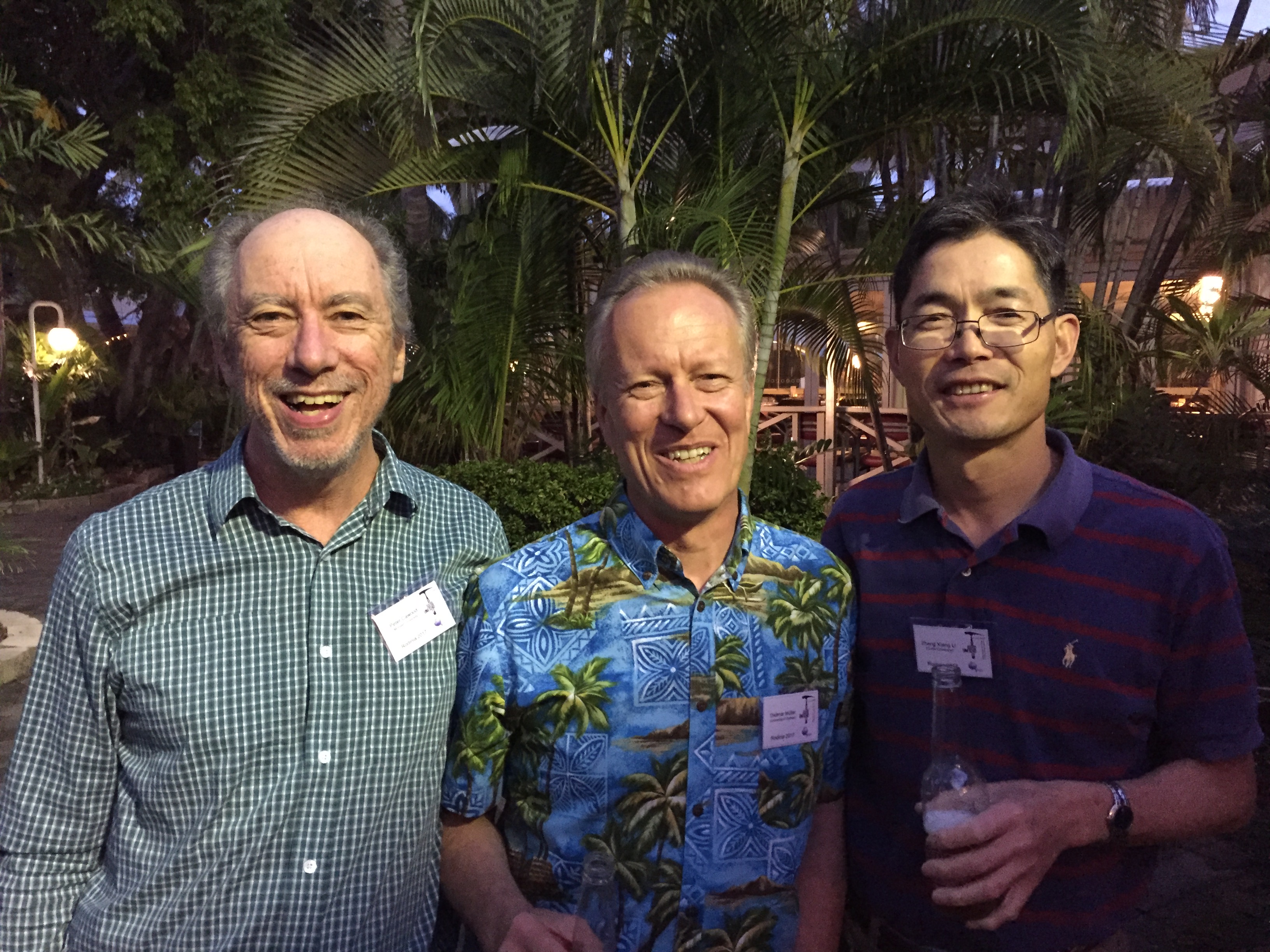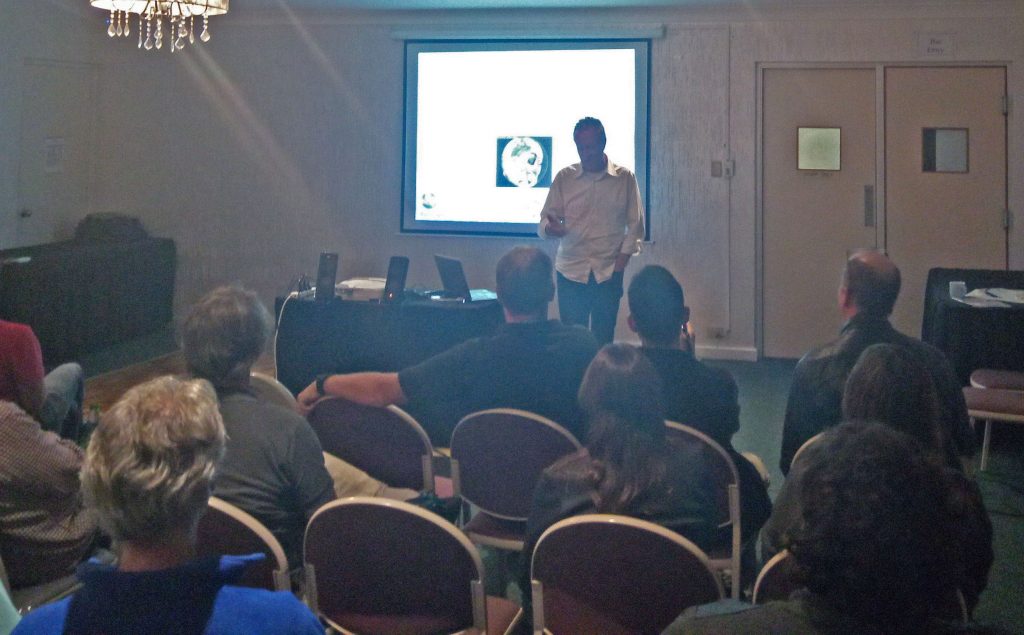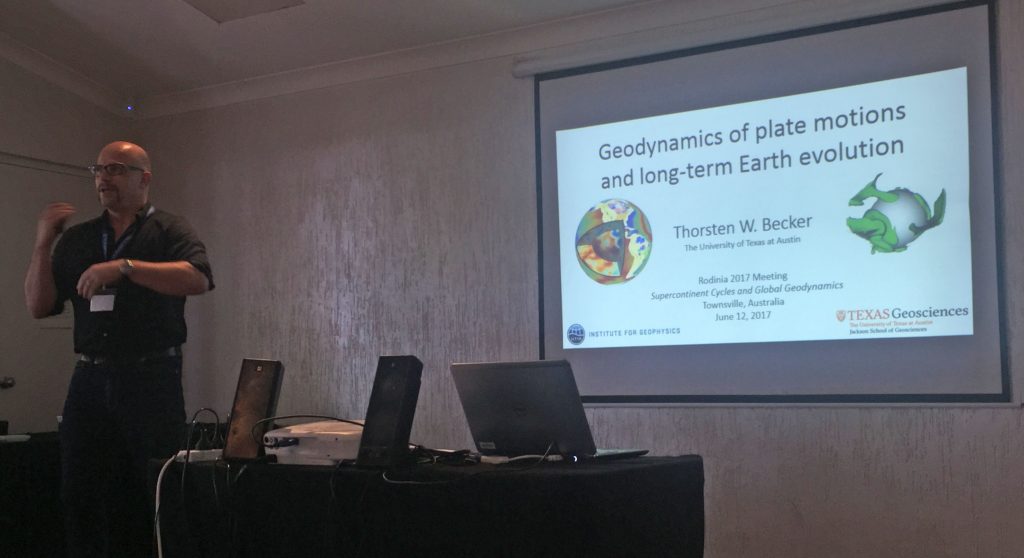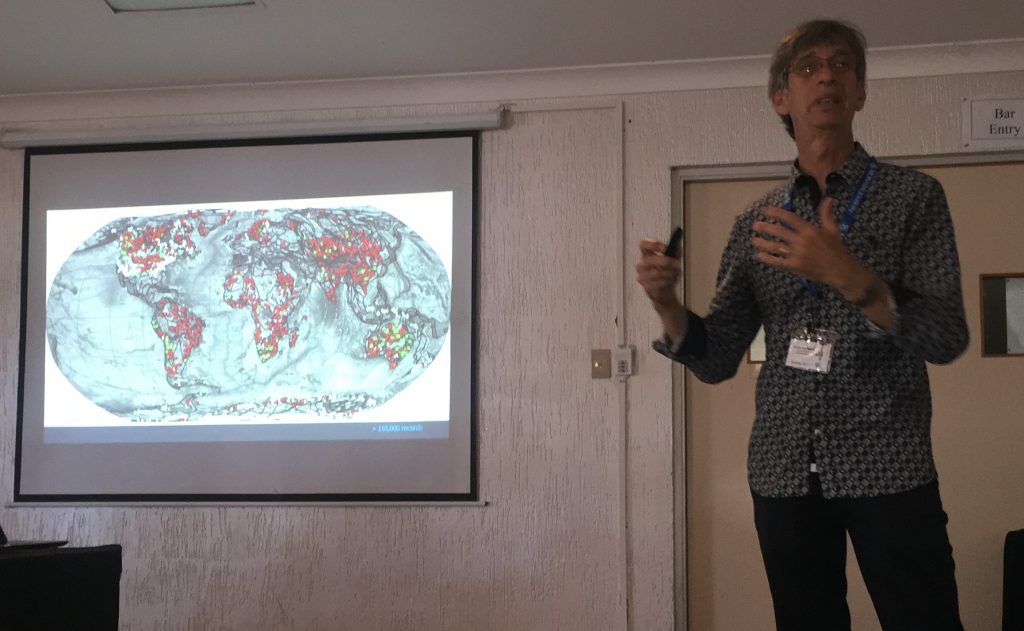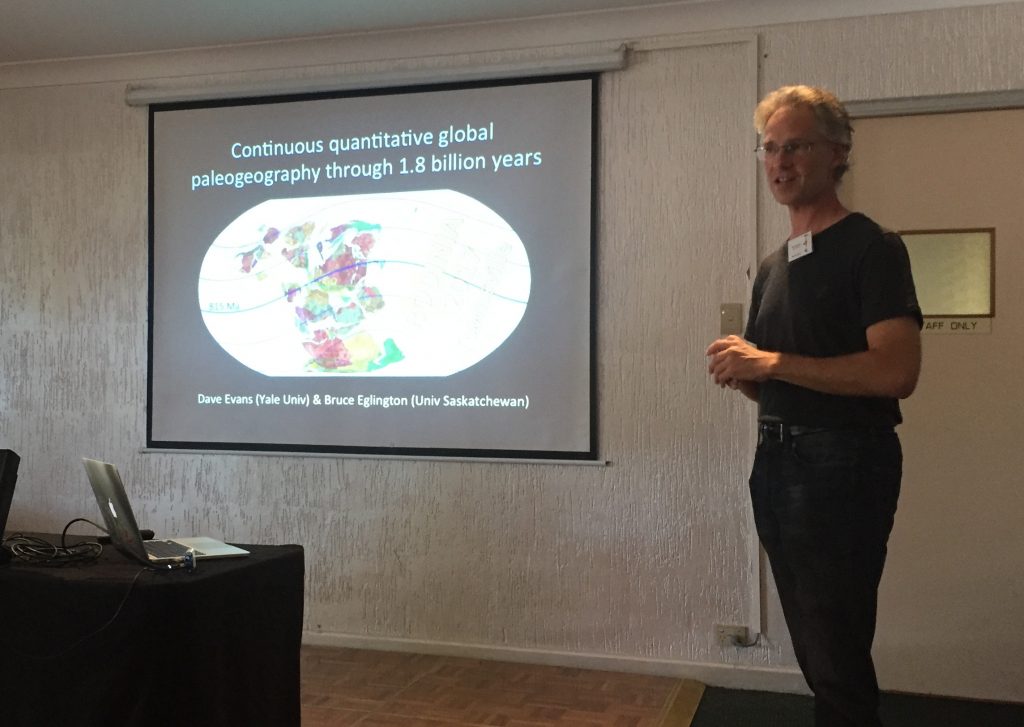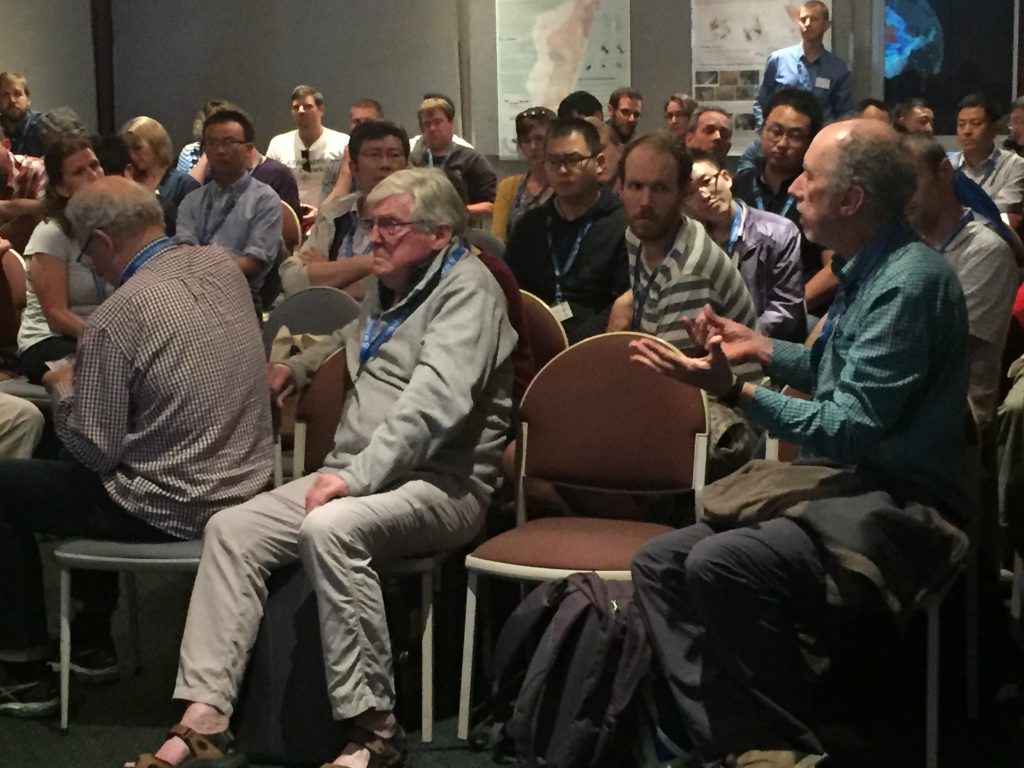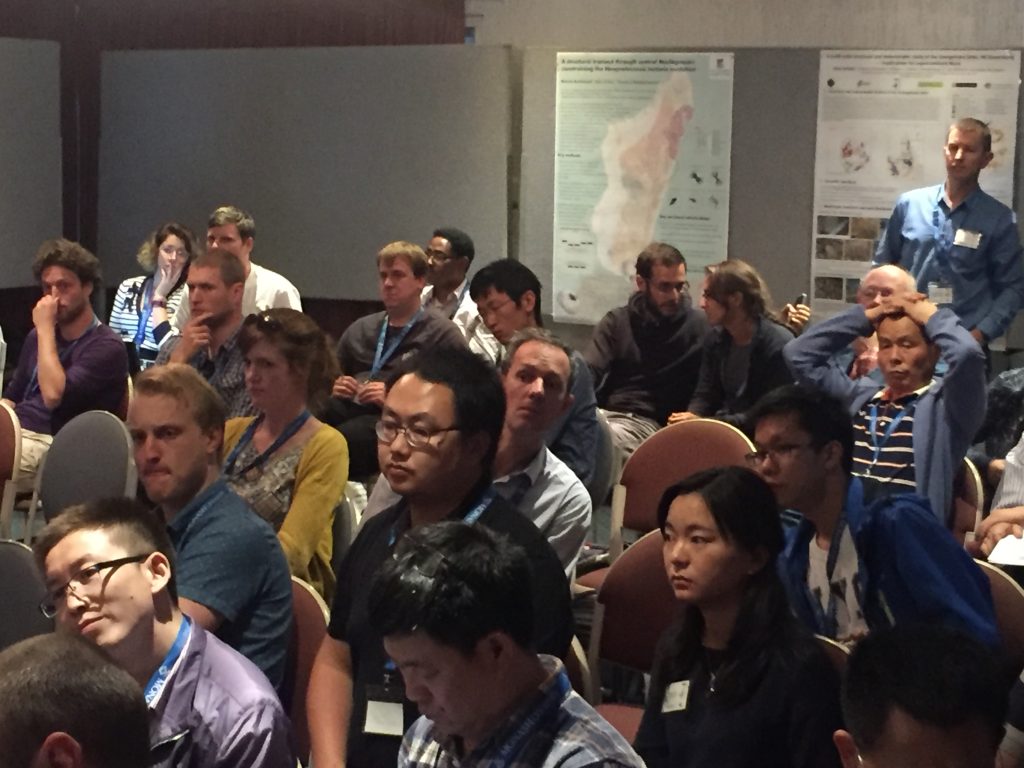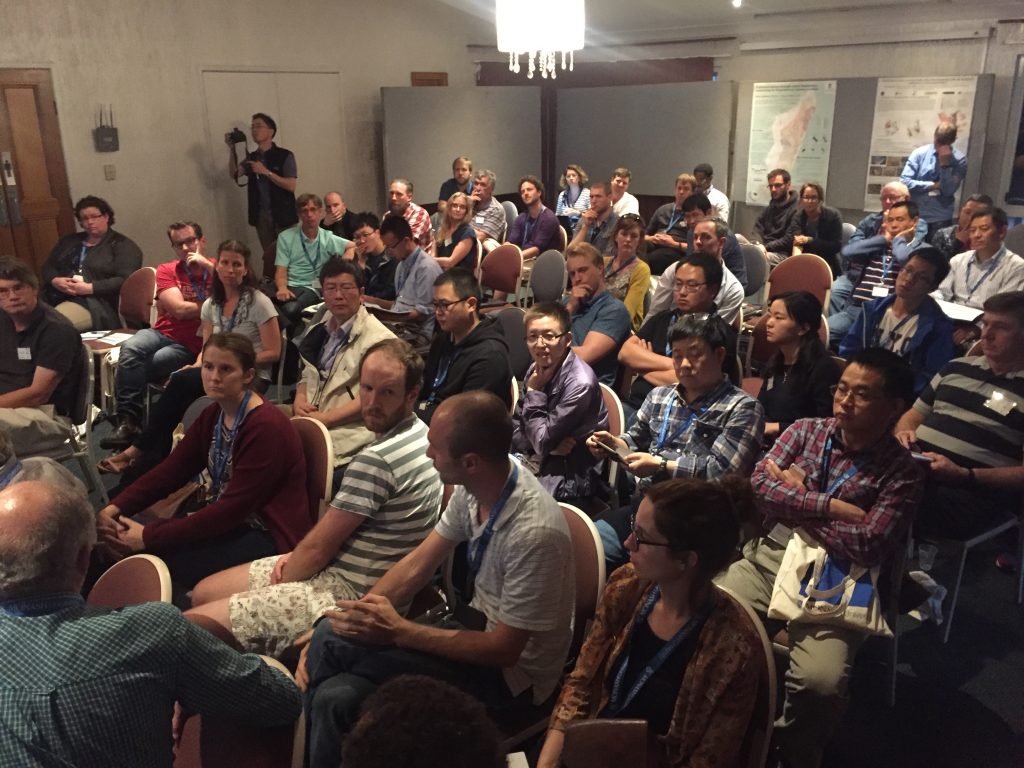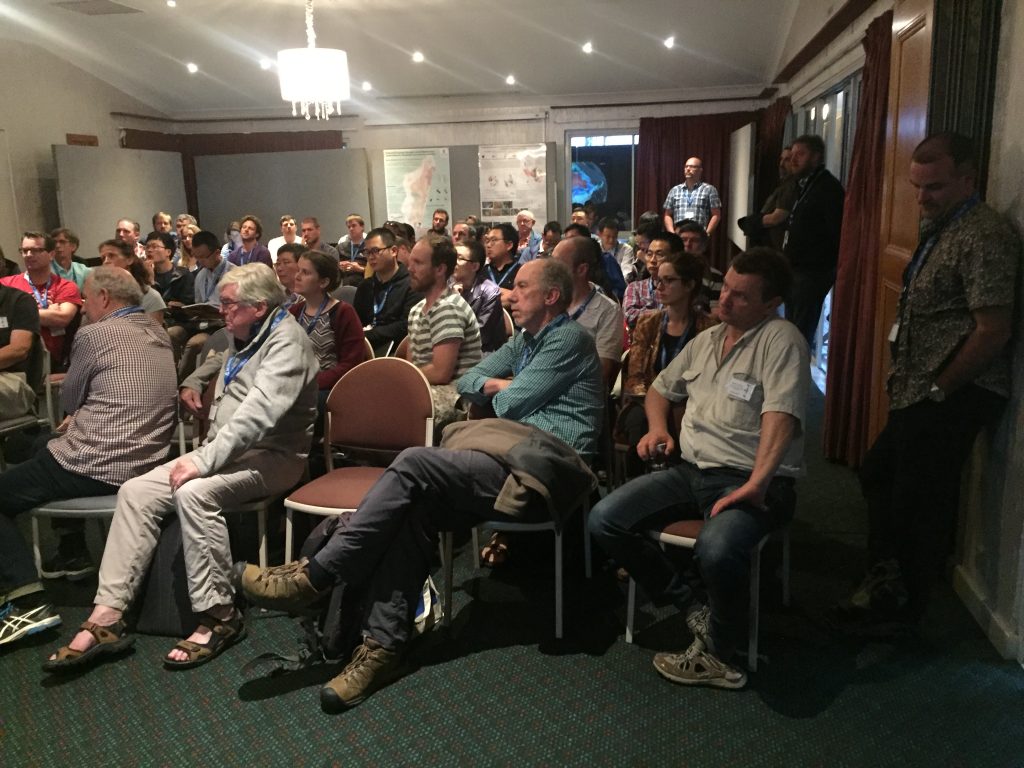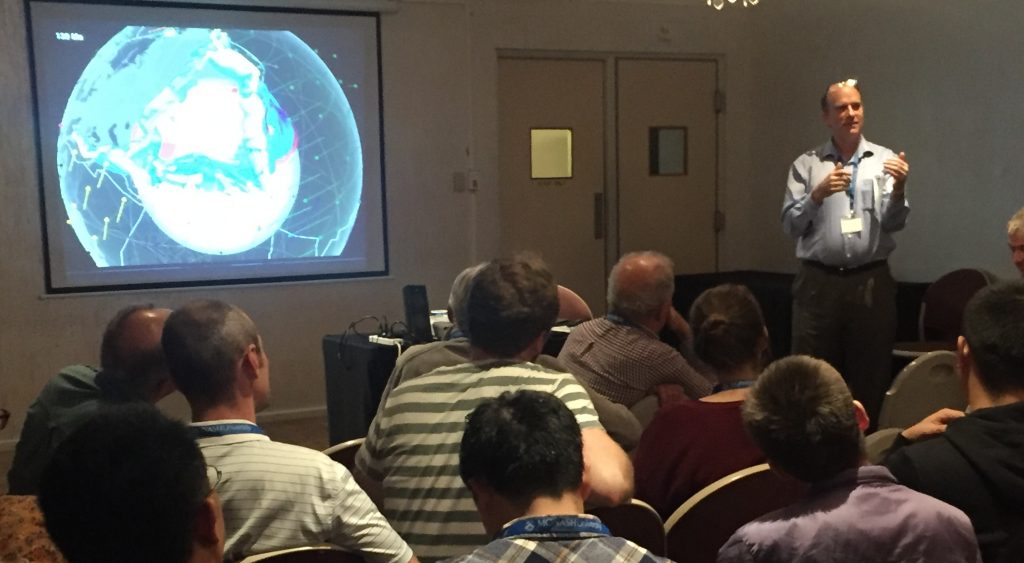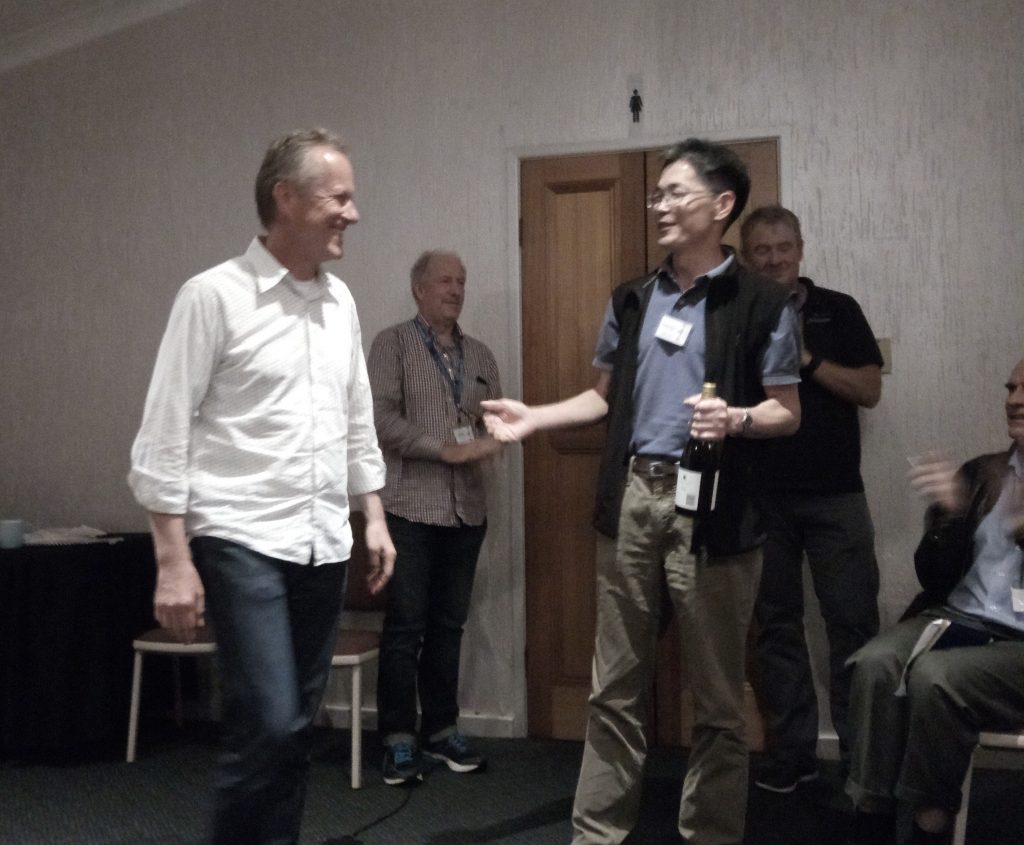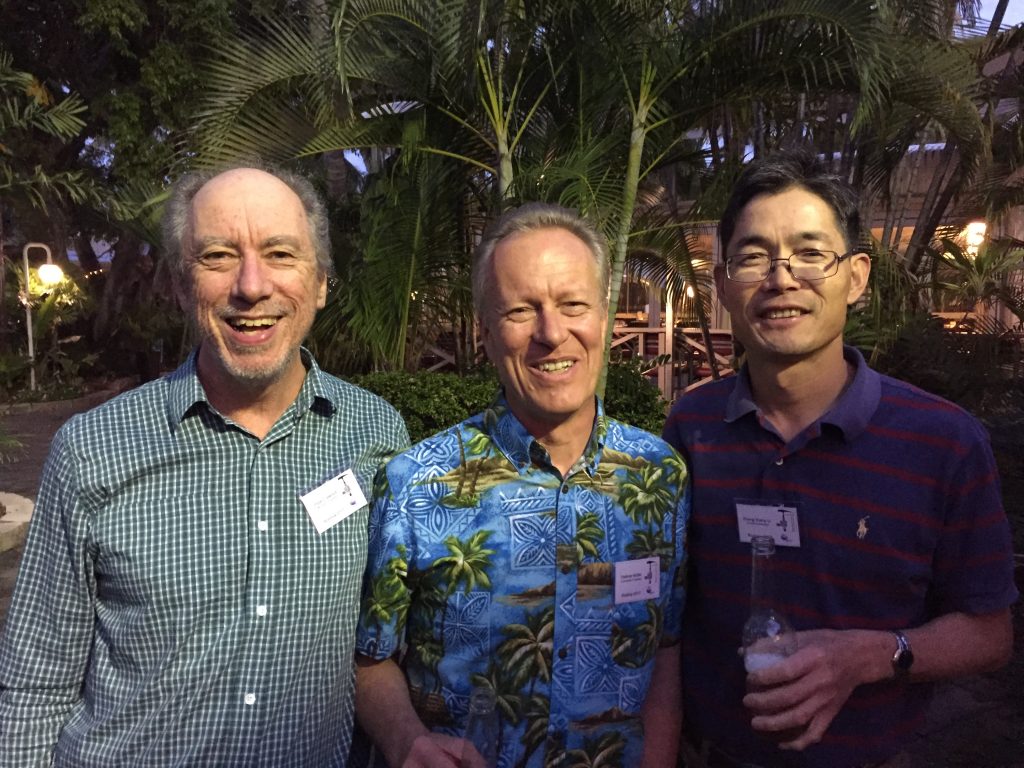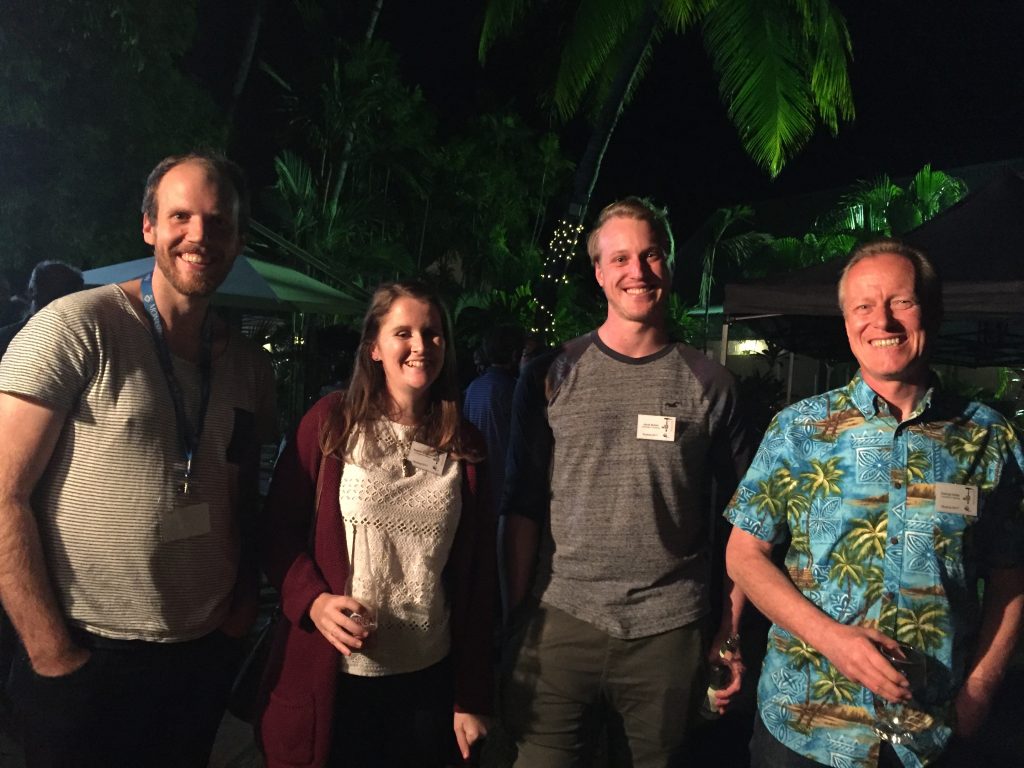Several EarthByters presented talks at the Rodinia 2017 conference in Townsville, including Dietmar Müller, Andrew Merdith, Simon Williams, Mike Tetley and Nicolas Flament. The conference was opened by two talks by Alan Collins (Univ. Adelaide) and Andrew, presenting their new Proterozoic Rodinia plate model with continuously closing plate boundaries that were recently published in Gondwana Research. Dietmar gave an evening presentation while refreshments were served, explaining the workings of motorboat tectonics, the benefits of undiscovery versus discovery, and contemplating some rules of plate tectonics and geodynamics. Simon outlined the functionality highlights of GPlates2.0, including deforming plates, and pyGPlates, with some great examples applicable to deep time reconstructions, Mike outlined the absolute plate model optimisation techniques that he developed as part of his PhD, while Nico made a case for LLSVP mobility, particularly based on the “Perm anomaly” in the deep mantle (see his recent paper in Nature Communications).
The conference brought together a diverse range of geoscience expertise to present and discuss the latest progress in the occurrence and evolution history of supercontinents through geological time, and highlighted the latest research on the geodynamics of supercontinents, and developments in the relationships between supercontinents and other geological phenomena including updates in the global databases of geotectonics, palaeomagnetism, mineral deposits, and the occurrences of past mantle plume events. A surprise attendant at the conference was Iain Dalziel; Iain, it was great to see you are still pushing the boundaries of Rodinia! Conference organisation was led by Pete Betts from Monash Univ., who did a superb job in bringing a diverse group of researchers together in a thoroughly enjoyable conference atmosphere. Well done Pete!
![]()

